Carl Hester, trainer and rider, and Peter Holler, judge, on what they look for in Young Horse Classes
When Carl, and German judge, Peter Holler, commented on the top combinations in the Young Horse classes the Brisbane Dressage Festival, the tone, I am sorry to inform you dear reader, is the same old, same old, and it all starts with the Training Principles – and the first of those, relaxation:
Carl told the audience:
“If they don’t have relaxation it affects their paces. Some horses can be tense and produce spectacular movement, but that’s not right either. Others go into themselves. You just have to think of the Training Scale, how the horse uses itself. Look to the head and neck, if the neck is not nodding outwards, the horse cannot be supple in its back. If they nod inwards it shows they are tight in their back.”
Quadriga Galicia and Marcela Adkins
Peter Holler (on left) part of the Judging Commission at the greatest young horse show of all, the Bundeschampionat
Peter Holler stressed: “In the trot we are looking for a natural, not an extended or suspended step in trot. Just a clear two beat and just two or three longer steps. Are they willing to go forward? Do they stay supple and rideable?”
Carl tells us he asked Peter Holler, who judges young horse classes frequently in Europe:
“What is the most important thing the movement or the temperament?
His emphasis was on a natural moving horse not an over-produced one.”
Emma Flavelle-Watts and San Fama
Fairly soon, Carl demonstrated how willing he was to use the leg yield. Pointing to the way the horses tended to lean on the rider’s inside leg – particularly when they were on their difficult rein – he suggested a few steps of leg yield to get the horse around the leg and stop them getting hollow backed in the transition.
Highfields Bella Vista and Deborah Oliver
And as always, Carl was supportive of the riders. It was not the end of the world if they hadn’t got big marks at this show: “A four-year-old is a dream, and the future is in the work, it’s not always the horse you buy, it’s the work you put in. One thing we can’t tell from the outside is what it feels like. Just because it doesn’t get the scores, doesn’t mean it is not a Grand Prix horse. What you feel is important, if you can influence the horse, and if it is a worker, that is very important, the scores are not the end of it all.”
When the five-year-olds entered the arena, Judge Holler emphasised that “a little mistake is okay, we are looking for potential not perfection.”
And Carl took up the riff: “If we have two tests, one mistake free, but with no quality, and one with quality but the horse makes mistakes, the quality should come out on top.”
And the leg yields had become a little more sophisticated now: “When you sit and ride leg yield, look at the horse’s ears. You can tell if the tips of the ears are level. If it tips its neck, you can tell it is not supple to that side and that makes the neck twist. Adjust the head, inside hand higher, lower, it is a stiffness – the horse is not being bad, but you have to dwell on it and fix the stiffness.”
In the six-year-olds, Peter Holler was a bit disappointed with the walks:
“We want to see the ability to shorten, not high in the poll and very collected, just that they stay quick enough behind and in good rhythm. None of these horses would score over 8 for walk, they are not really Young Horse walks, they are Grand Prix walks, and they lose the suppleness.”
Remi Downunder and Emma Flavelle Watts show off their birthday trick
And, of course, as a sixth birthday present the horse gets a stab at the dreaded flying change. Here Carl thought part of the problem came from the rider’s legs: “Riders in the tests couldn’t get the leg on because the horses knew what is coming. Try and keep the canter smaller, and instead of surprising the horse by putting on the leg, keep the leg on. Little canter with the leg closed.”
San Fama and Emma Flavelle-Watts
“Why is the canter so important? If your ambition is Grand Prix, look at the judges’ sheet and see how many canter movements there are. The other paces are important, but canter is the most important.”
Remi Downunder and Emma, owned by Hope Beerling
And the horses were not going to be allowed to leave the arena until they really let go and stretched: “The main thing is to leave the arena relaxed, you can only finish when the horse is relaxed, if it is tense, then keep going until they will relax.”
Breeding a young horse star in Australia? Go to www.ihb.com.au and select from the range of top stallions for your mare:
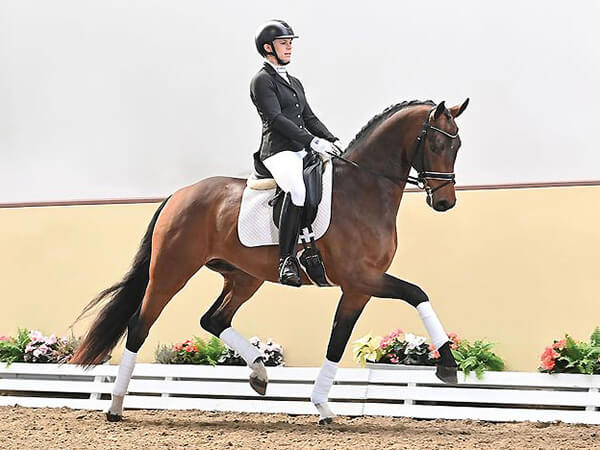
Image Maker
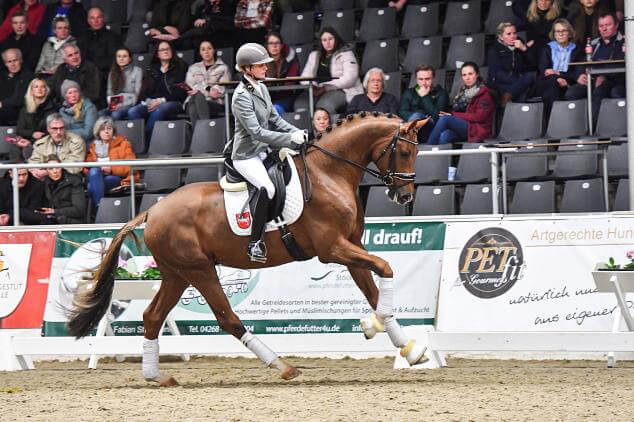
Barbarossa



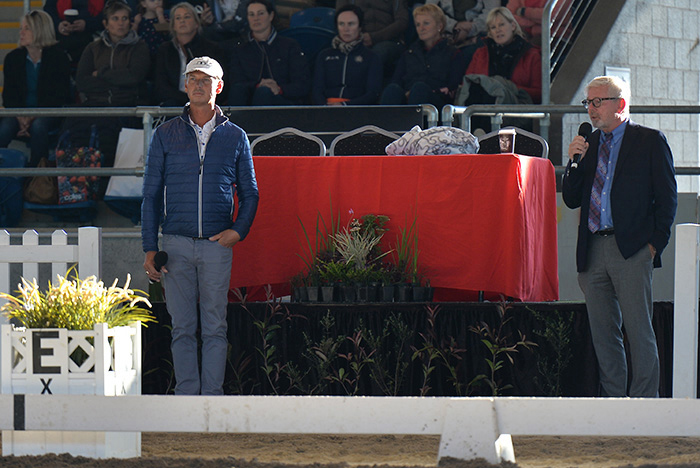
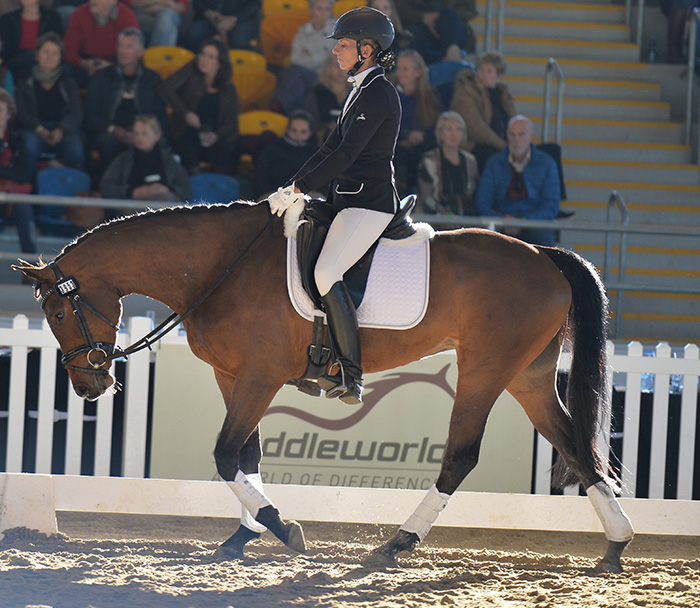
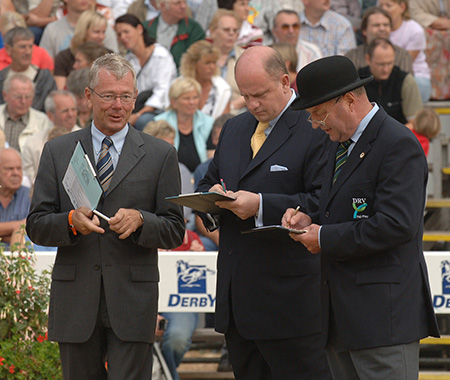
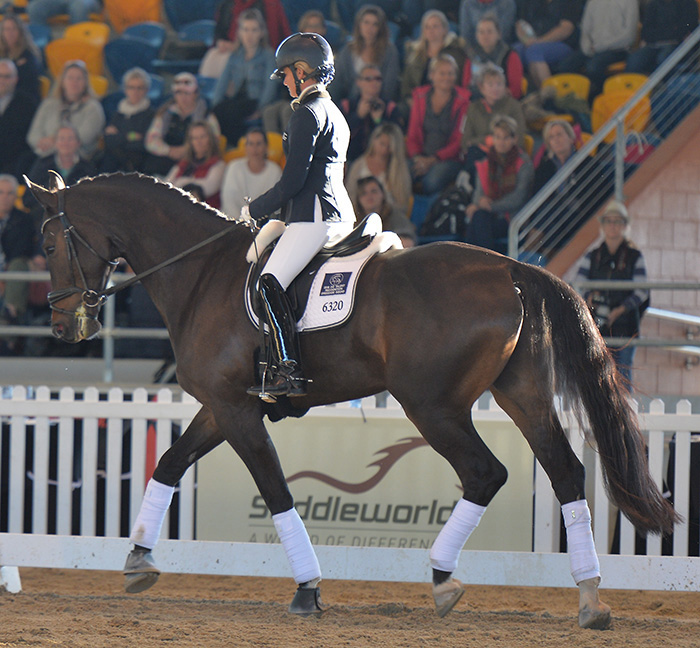
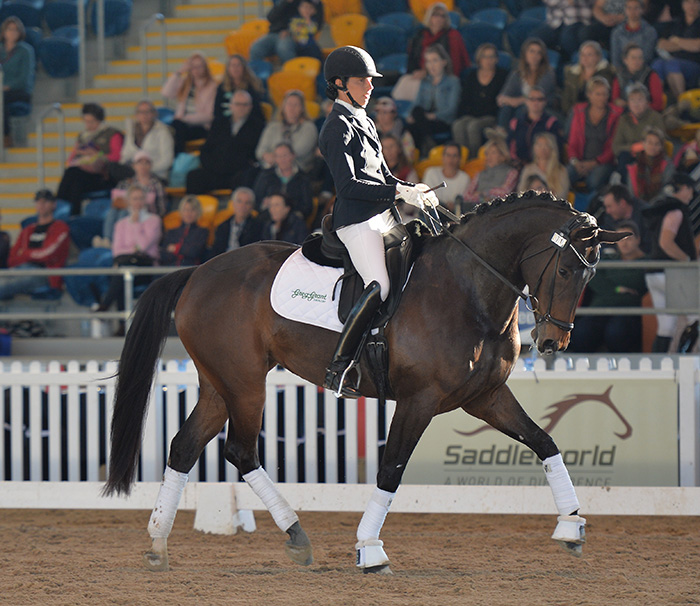
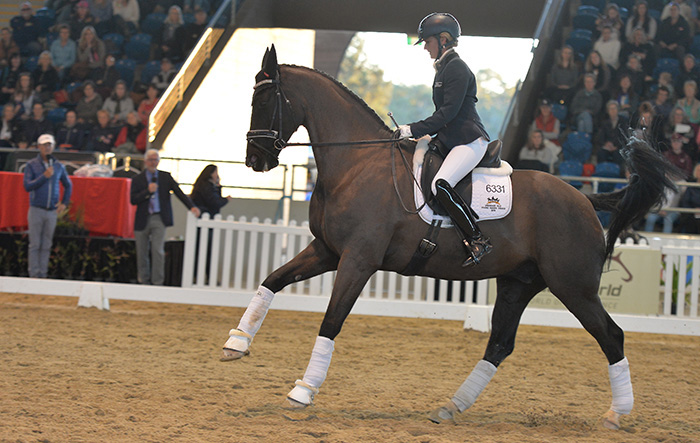
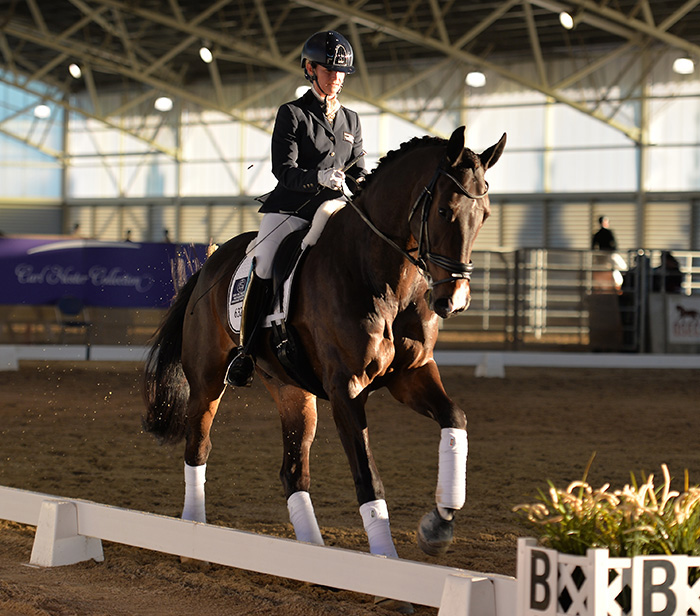
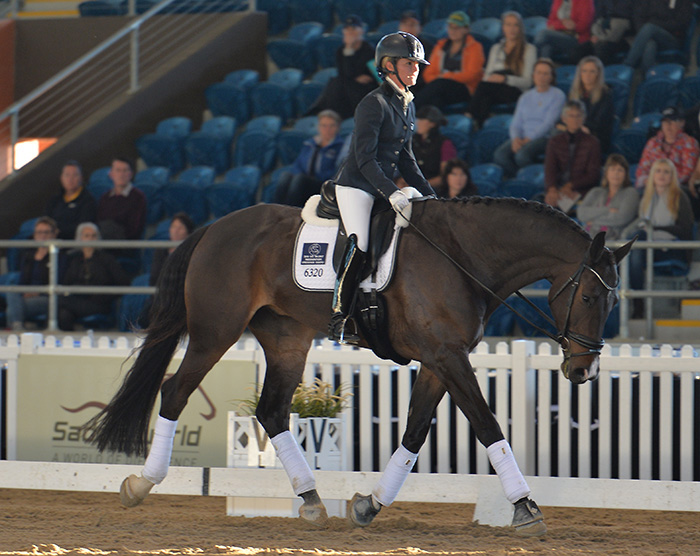
On all the pictures, except one, the head is not according the FEI rules in front of the vertical. So what are these judges doing. Judging according the rules or according the imbalanced fashion?